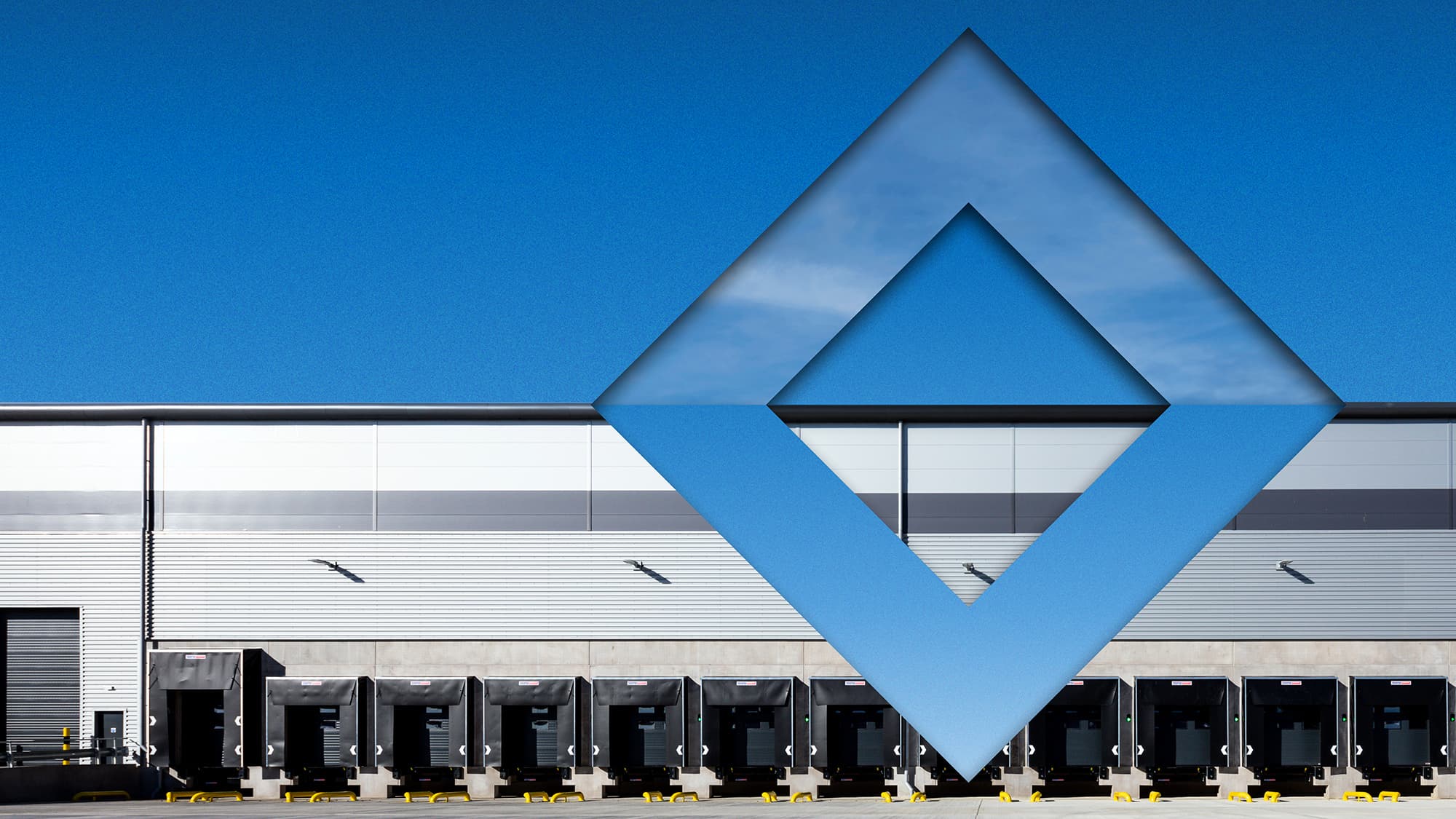
5 Things You Need to Know About Big Box Logistics In Q2 2024
- Take-up in the second quarter has reached 6.35 million sq ft, which is up 11% quarter-on-quarter and takes the H1 total to 12.1 million sq ft – in-line with pre-Covid average.
- The DTRE Big Box Vacancy Rate stood at 7.2% at the end of Q1, but we are pleased to report that has trended downwards over the last three months and now stands at 6.8% at the end of Q2.
- With vacancy now on the turn, development slowing and occupier demand, particularly for ‘New/Grade A’ product on the rise, we expect to see rental growth pick up once more from here on for the remainder of 2024.
- At £1.8bn, trading volumes in Q2 have increased 63% on what we saw in the first three months of 2024.
- With the likelihood of a new government and with the Bank of England expected to cut rates in either August or September, we expect the ‘Bid/Ask’ spread which has held back the market for much of the year to narrow and a busier second half of the year will unveil with increasing levels of stock expected.
Occupational
Cautious optimism has returned to the Big Box logistics market in the last three months, with some big requirements providing a boost to take-up numbers and the slowdown in development completions ensuring that the vacancy rate is now on the turn. DTRE expects this positive momentum to carry on through the remainder of the year.
Take-up in the second quarter has reached 6.35 million sq ft, which is up 11% quarter-on-quarter and at the halfway stage of the year, 2024 is in-line with 2023’s 12.1 million sq ft. The second quarter has seen some big occupiers finally sign for space, such as Nike taking 1.3 million sq ft at GLP’s Magna Park Corby scheme, which has boosted the overall take-up number. We also witnessed 7 deals for units of greater than 300,000 sq ft – which is more than any other Q2 outside of the Covid years.

As a result, we are now seeing some take up momentum for units between 300-400,000 sq ft, which at the turn of the year accounted for nearly a third of all Grade A supply. Deals at Ergo 354 in Fradley (Super Smart Services), Unit 1 Orwell Logistics Park (EDF Energy) and MPS9 Magna Park South Lutterworth (CEF) have all helped in both boosting take-up and reducing the vacancy rate.
However, take-up of units between 100-300,000 sq ft was just 2.3 million sq ft in Q2 - that’s 29% down on the pre-Covid average. Furthermore, second-hand units of between 100-200,00 sq ft saw virtually no lettings at all, which we believe reflects the preference for newer, sustainable, and future-proofed assets.
The DTRE Big Box Vacancy Rate stood at 7.2% at the end of Q1, but we are pleased to report that has trended downwards over the last three months and now stands at 6.8% at the end of Q2 with 4.26 million sq ft of take up of standing stock, reducing overall supply to just over 51 million sq ft. The ‘split’ is now 21 million sq ft ‘New/Spec Built’ and 30 million sq ft classified as ‘Second Hand’.

We can also report that the continued slowdown in new speculative completions, and this, coupled with the existing unsatisfied occupier demand will ensure that downward pressure on vacancy rates will continue for 12 months at least given the structural delay required to implement new build starts on site.
Currently there is approx 8 million sq ft of existing warehouses under offer and whilst it’s difficult to forecast the extent of further second-hand or grey space being added to the market, there’s only 960,000 sq ft across 6 units of new development, all between 102,000 sq ft and 240,000 sq ft, that will reach practical completion by the end of Q3. As a result, we expect the vacancy rate to compress further to 6.3% by the end of September.
MSCI’s latest Monthly Index showed rental growth for distribution warehouses was just 0.23% in May (annual rate of 5.7% to end May), which is the lowest monthly level since peak-lockdown in January 2021 and unsurprising given the hike in the vacancy rate over recent months. But with vacancy now on the turn, development slowing and occupier demand, particularly for ‘New/Grade A’ product on the rise, we expect to see rental growth pick up once more from here on for the remainder of 2024. Despite the statistics, DTRE have continued to experience strong rental growth in core markets at beyond these levels.

Capital Markets
At the end of the quarter some cautious optimism has returned to the capital markets. Sentiment is starting to improve and in a few limited examples competitive tension has returned. One Swallow does not make a Summer – perhaps it may make an Autumn? With the likelihood of a new government and with the Bank of England expected to cut rates in either August or September, we expect the ‘Bid/Ask’ spread which has held back the market for much of the year to narrow and a busier second half of the year will unveil with increasing levels of stock expected.
Q2 saw £1.8 bn of deals complete, with the largest transaction in the sector being Tritax’s purchase of Abrdn’s UKCM which included c.£270m of logistics assets. The largest single-unit deals saw Ceva Logistics purchase its own warehouse at Rockingham Gateway from Mulberry for £78m, whilst M&G sold a Co-Op distribution unit in St Helens, just outside of Liverpool, to Brookfield for £59m/5.79% NIY.

At £1.8bn, trading volumes in Q2 have increased 63% on what we saw in the first three months of 2024, and this cautious optimism is largely mirrored in the bond and swap markets. 5-year swaps are now priced at 3.95%, down from the 4.1% - 4.2% range where they have spent most of Q2 with a similar story playing out in the bond market for UK 10-year gilts, as investors price in interest rate cuts as inflation has tumbled down to its 2% target.
Pricing has remained firm through the quarter, particularly for assets with reversion and with little to no sign of distress in the sector, a phenomenon hopefully confined to the US and office sector, we expect both direct pricing and valuation yields to remain stable for the remainder of the year, with some inward movement for assets with open market rental mechanisms.
In fact, the ’Bid/Ask’ spread, which has narrowed marginally during Q2 should continue to see the gap close over the forthcoming quarter as swaps (5-year) and gilts (UK 10-year) dip under 3.9%. This could unlock a number of deals, including some larger deals and portfolios which have continued to be conspicuous by their absence.
Finally, and surprisingly, (and unlike in France) the UK’s general election has not seemingly spooked the investor community this time around, as it has done in the past, with investors much more focused on the latest CPI print and the bank rate, rather than whether it’s a Labour or Conservative government.
To that end, we don’t expect to see any disruption caused by a change of government. Indeed, if Labour, who are on average 20 pts clear in the polls, do form the UK’s next government then their proposed reform of the planning laws, intended to promote housing development, should also be seen as an unintended boon to logistics.



